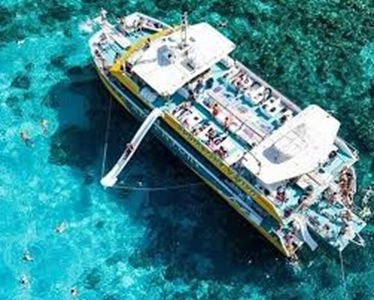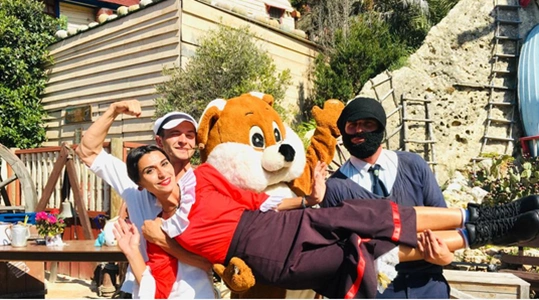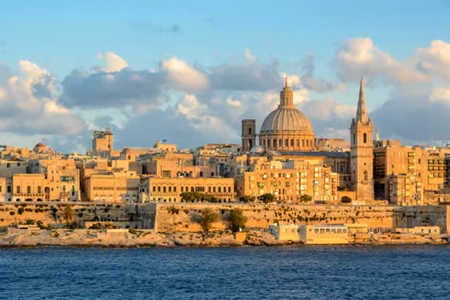Maritime Squadron
The Maritime Squadron of the Armed Forces of Malta is part of the Maltese army and responsible for the safety of Maltese territorial waters. Malta is also the external border of European waters.
App info: In our app you will find the location, address, opening hours and admission / entrance fee of this spot. If you use the app, you will find additional information and news about this spot on this page.
The maritime Squadron was established in 1970 and consists of a Protector class P51 and P52 as well as a modified Diciotti class ship P61 for offshore assignments, four P21 class patrolling boats for coastal fishing assignments and rescue operations, a number of Melita class SAR Launch and a defender class CPB for military activities and assistance to police and security services.
History
The first maritime forces were acquired and built up with the arrival of the Order of St. John. It was a powerful fleet of ships.
To get an impression of a ship from 1522; it was made of wood, but completely armoured with lead plates, attached with bronze nails, and had six decks, cabins, messes, and officers' quarters.
Then there was a gunsmith on board, a baker, ovens and a mill, kitchen, a garden, etc.
In addition to the required sailors and permanent crew, there was room for 500 marines and the ship was armed with 60 guns and the required hand weapons.
But of course there were also the galleys.
The Battle of Lepanto
During the period of the Ottoman Empire, the Battle of Lepanto took place in October 1571.
After an attack by the Ottomans on Famagusta, the Venetian commander of the Fort, Marco Antonio Bragadin, wanted to surrender on the condition that he could leave Cyprus freely.
The Ottoman commander, Lala Kara Mustafa Pasha, agreed. However, he captured the Venetians and Bragadin was skinned alive and his corpse hung with the heads of three Venetian commanders beside him.
This message reached the leader of the John of Austria Coalition. The fleet of the Holy League was at Viscardo in Cephalonia.
The Holy League consisted of: Republic of Venice, Spanish Empire, Republic of Genoa, Papal States, Grand Duchy of Tuscany, Duchy of Savoy, Duchy of Urbino, the Order of Malta.
The fleet of the Holy League consisted of 206 galleys and 6 large new galleys with artillery. This involved 40,000 sailors and rowers and 28,000 soldiers.
On October 7, the fleet sailed from the Holy League to the Gulf of Patras and hit the Ottoman fleet.
The fleet consisted of 222 war galleys, 56 galleys and a few smaller ships manned by 13,000 experienced sailors and 34,000 soldiers.
The Ottomans naturally had the order of the Sultan to fight. John of Austria had to consider his decision. He must have thought, among other things, that he had set himself up as a coalition leader, and the personal and political differences within the Holy League were not so positive about that either.
He decided to attack and won 5 hours later.
The Holy League lost around 7,500 soldiers, rowers and sailors but also acquired around 7,500 people who had been captured by the Ottomans and enslaved to row on their ships. A total of 50 galleys were destroyed.
The Ottomans lost 15,000 men, 3,500 were captured and 87 vessels were seized.
Historians believe that if the Holy League had not won this battle, the Ottoman Empire would have extended to Western Europe.
In the 17th and 18th centuries the Maltese ships went into battle with hijackers and the Ottomans and eventually the dangers decreased but the Order was also financially and materially weakened.
But then, in 1798, Napoleon, the next world conqueror, arrived and landed in Malta and the Navy Order was included with the French Navy.
The British period began two years later. The island was transferred to the Mediterranean fleet of the Royal Navy.
Transmission masts were made, and the port activities were further developed.
The Mediterranean fleet played an important role during the Second World War.
After the departure of the British, in November 1970 the maritime forces of the land army of Malta were established in Senglea.
At the beginning of 1971 two American coast guard boats were obtained and deployed.
The number of patrol boats was then increased, this time obtained via West Germany and Libya. In 1973 a first ship was built in the Malta dry dock for customs activities.
The Maritime Squadron moved to Floriana in 1977, where it is now stationed.
On 7 September 1984, the patrol boat with its 6-man crew and two police officers was dumping illegal fireworks. Probably due to a spark caused by a hatch, an explosion occurred.
Only one person from the crew survived the explosion although badly wounded. The other crew members and the two police officers were killed.
Address and street / location can be found on our map, click on Guide in the menu bar and you will get a map with markers. | |
Book: Buy tickets for place of interest. sights, hop on hop off buses, exhibitions, safari, etc or book and tour. | |





